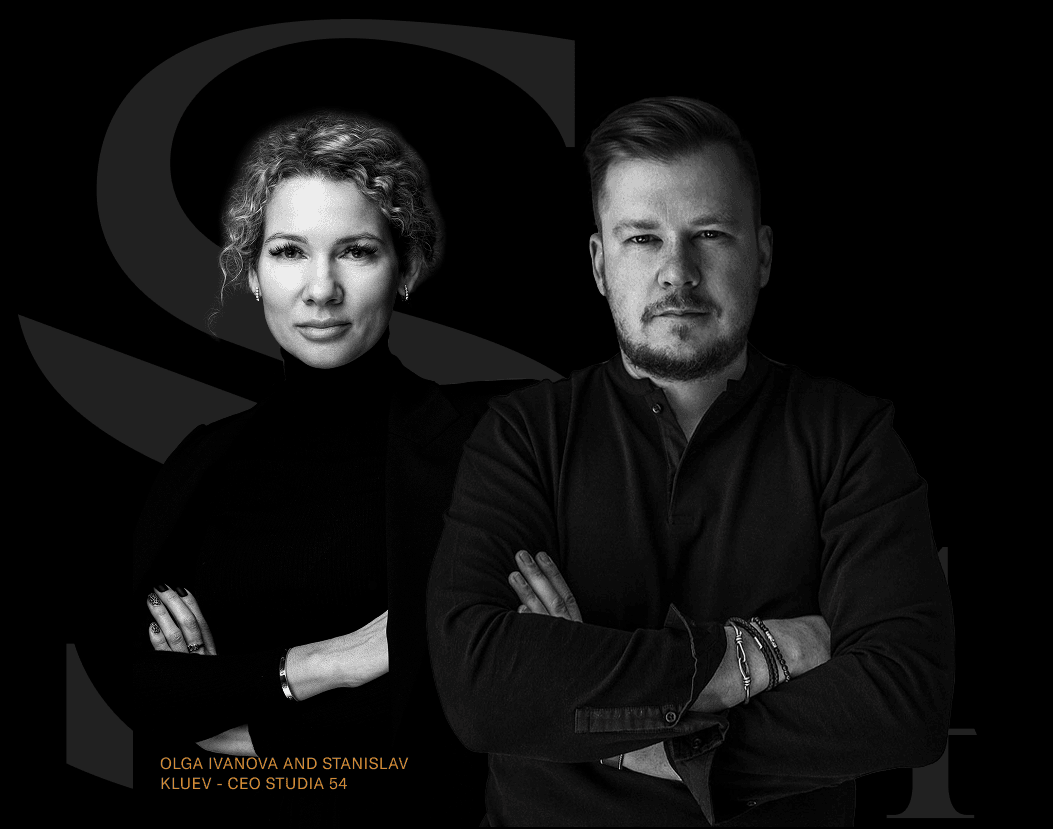/ Interior
~ 8 min
Published: 27/12/2025
Among many projects of Studia 54, our largest is considered to be the interior design of a premium restaurant in Perm at the Hampton by Hilton hotel. Using this example, we will show you which trends provide a competitive advantage today, how they increase the value of an establishment, and why investing in design is the right thing to do.
The interior design of the restaurant features Studia 54's signature aesthetic, which has become the establishment's calling card: carefully thought-out leisure scenarios and original installations have created an atmosphere that visitors will want to return to time and time again.
In this project, we reimagined the industrial character of the city in the design—the textures and shades refer to its industrial history, and the floor, made using a mosaic technique with broken ceramics, imitates a metal alloy. We also incorporated the motif of the local Kama River into the interior: it symbolically crosses the restaurant from one area to another, tying the space together into a harmonious, cohesive picture.
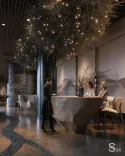
Local identity as the foundation of the brand
Before launching the project, our team visited the Cherdyn State Museum, where they studied ancient artifacts and exhibits in order to interpret them in the interior design of the establishment.
In an era of global standardization, restaurants are increasingly seeking to emphasize their uniqueness: local culture, history, and regional characteristics. Such restaurants attract those who seek authenticity and atmosphere, especially in the premium segment.
We implemented this approach in our project in Perm: original bas-reliefs referring to the cultural heritage of the region, natural motifs, and materials reflecting the spirit of the region. This design tells a story, creates an emotional context, and strengthens brand recognition.
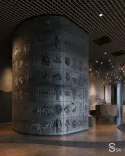
Art objects and installations
Handcrafted sculptures, installations made from natural elements, and original details undoubtedly become the focal points of a restaurant. They create a unique visual experience that guests remember and want to repeat.
Looking ahead to 2026, natural motifs are particularly popular: wood, minerals, living forms. This sets the mood, enhances the atmosphere, and makes the interior more photogenic—which is especially valuable in the age of social media.
Tactile surfaces and textures
Materials with character are at the peak of popularity today: concrete combined with wood, textured plaster, and mosaics reminiscent of natural forms. This mixture of textures creates depth and emotional richness.
The combination of massive and airy, rough and light creates a sense of balance, so that the interior does not seem heavy but remains expressive.
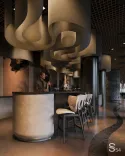
Branded furniture and designer items
More and more often, restaurants are moving away from standardized furniture sets and ordering designer solutions: tables, chairs, podiums based on studio sketches, taking into account the concept of the establishment. This adds flexibility and uniqueness and becomes part of the corporate style.
We took special care in selecting furniture for the interior of a restaurant in Perm. Comfortable chairs from our premium furniture brand FiftyFourms and round tables invite guests to relax and enjoy breakfast or dinner.
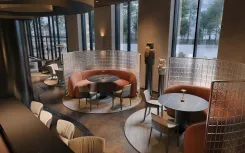
Multi-level lighting
Lighting becomes a tool that shapes the emotional rhythm of a restaurant. Layers of light — soft background lighting, directional accents, decorative installations, illuminated textures — create a flexible atmosphere that changes depending on the scenario.
An evening dinner, a business meeting, or a morning breakfast are perceived differently thanks to the light, which helps the space adapt to the time of day and the mood of the guests.
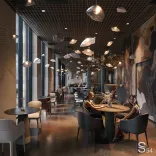
Open kitchen as part of the show
The open kitchen format has become one of the key tools for engaging guests. Here, food preparation becomes a demonstration of the chef's skill and part of the restaurant's visual narrative.
That is why the aesthetics of such areas—materials, textures, facade lines—become as important as the design of the main hall. The kitchen is no longer hidden: it becomes a full-fledged element of the interior and enhances the confidence of visitors in the dining room.
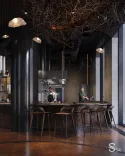
Monochrome with accents: the formula for success
Modern restaurants are increasingly using a soft, natural palette as their dominant color: coffee, cream, sand, and beige shades. Against this neutral background, accents stand out brightly: graphite, ochre, clinker red, and deep natural tones.
This technique creates a calm, cozy atmosphere while highlighting furniture, textiles, and art objects and creating a visual structure for the space.
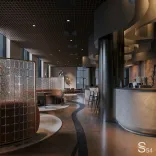
Designing restaurant dining scenarios
Restaurant design is increasingly focused not on decor, but on guest routes. The path from the cloakroom to the table, the logic of movement around the bar area, waiting for an order, transitioning to the open kitchen or restrooms — the entire experience should be intuitive and comfortable. When the space is thought out down to the smallest detail, guests feel ease and comfort, which directly affects the average check and return rate.
Light, textures, natural materials, and aromas intertwine to create a unified impression. The restaurant interior in 2026 is a multisensory experience. Every detail, from the softness of a chair to the smell, forms a unique memory of the place.
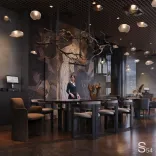
How design affects revenue: expert advice for investors and restaurant owners
According to foreign review publications, it is design and atmosphere that become tools for attracting guests, increasing their length of stay, and creating “emotional loyalty.”
The interior is one of the main factors in deciding to visit: if you like the design, you are already “sold” before you even look at the menu. High-quality design increases the length of time guests stay, which allows you to increase the average check.
At the same time, art objects, unusual shapes, and spectacular lighting make the space “Instagrammable,” which provides free marketing and promotion. Unique design creates an emotional connection with the brand: guests return, bring friends, and become regulars.
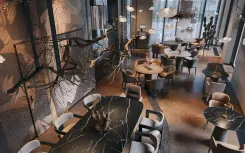
Studia 54's experience in designing restaurant spaces allows us to create interiors that work for business. In each project, we combine aesthetics, functionality, and in-depth work with user scenarios to make the space part of the brand strategy.






